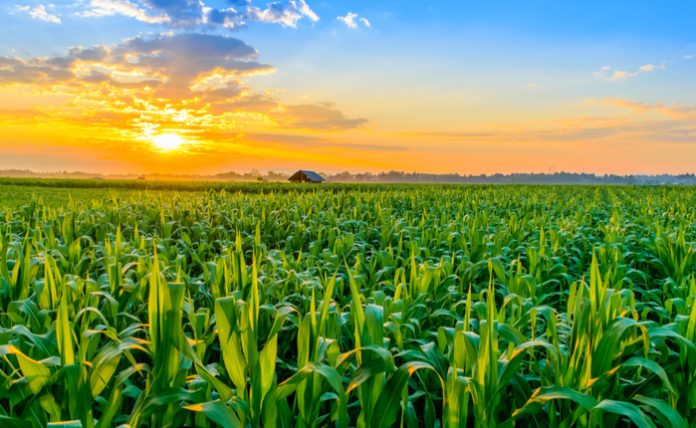America’s agricultural breadbasket has been hit with a string of bad weather that’s severely hampered the planting season.
The situation has become so bad that many farms have fallen behind altogether and are considering giving up altogether, choosing instead to take crop insurance payouts.
With next week’s weather playing a crucial role in whether farmers will opt out of growing this seasons crops altogether or choosing to give it a shot, agricultural commodities such as corn have reached multi-year highs.
CBOT corn was trading above $4.38 per bushel, the highest seen since Jun 2016. Since the start of May, prices for corn have shot up as much as 24 percent as poor weather conditions haven’t improved at all.
According to crop reports from the Department of Agriculture, only 58 percent of cornfields have been sown by last week, drastically below the 90 percent average that’s normal for this time of year.
For this week, the entire Midwest is expected to receive an addition 3-5 inches of rain, further exacerbating already saturated soil conditions from previous weeks. “The window for corn planting is gradually closing if the risk of yield shortfalls is not to increase significantly,” said Commerzbank analysts in response to the crisis.
Other crops, such as soybeans, have also fallen behind average planting figures. Currently, data indicates that just 29 percent of fields have been planted, well below the 66 percent average. Winter wheat is also becoming a casualty thanks to these wet conditions, as now only 61 percent of crops are in good or excellent condition, down five points since last week.
Speculators and analysts alike will be keeping an eye out for upcoming final plant dates to qualify for crop insurance. While some states have already past the dates for corn and rapidly approaching the dates for other crops like soybeans, other’s still have some time before the final planting dates arrive.
These dates are crucial due to the fact that farmers either chose to collect crop insurance for planting that would have been done past these days or lose crop insurance for the entire year.
With many farmers having already opted out in favor of insurance payouts, how the next week or two unfolds weather wise could have a drastic impact on corn and soybean futures.
However, even taking aside the wetness of the soil, generally cool and damp conditions are sub par for growing high-quality corn and soybeans, especially on a short growing season. As such, it’s expected that this upcoming crop will be low-quality at best, further pushing up prices in the future.
When coupled with the ongoing trade tensions between Washington and Beijing alongside a decimated pork supply in Asia that’s hurting demand for American feed, it wouldn’t be surprising to see corn prices surge to highs not seen in over a decade.
Either way, the next couple of weeks will make or break corn future prices, as farmers across the Midwest have a big decision to make, whether they keep planting what will be a mediocre crop or opt out in favor of insurance payouts.










